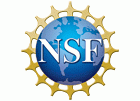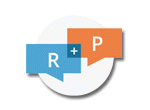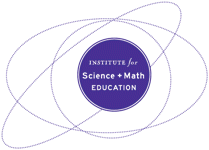Beyond the Written C-E-R: Supporting Classroom Argumentative Talk about Investigations

- Teachers should explore a variety of argumentation practices and foster discussions where students coordinate claims and evidence, reflecting how scientists talk about investigations and results.
- District staff & PD providers should provide PD for educators about different argumentation discussion strategies and share related resources.
- School leaders should help teachers observe strategies in different classrooms for facilitating evidencebased discussions across content areas.
What Is The Issue?
Argumentation, a central scientific practice, relies on the coordination of claims, evidence, and reasoning (C-E-R). C-E-R scaffolds can help students compose a written argument for an investigation. However, there are additional important dimensions to argumentation beyond individually written claims. Classroom discussions that require students to make evidence-based claims and collectively build understanding also reflect argumentation. Several types of discussions can be used and can help build a supportive classroom culture.
Authors:
BY JEANNE CHOWNING & TANA PETERMAN - MARCH 2015
Reflection Questions
- How can your classroom and lab activities be modified to provide opportunities for argumentation in these discussion formats?
- How much time are students provided to discuss their science ideas with each other?
- What are your strategies for focusing whole class discussions away from personal critique and towards the critical analysis of explanatory ideas?
Things to Consider
Argumentation is central to productive science learning. The following discussion formats can be used to engage students in argumentation around research design, data, and scientific models that explain phenomena. Written C-E-R scaffolds can be used in any of them.
1. Collaborative small group discussions can be rich contexts for students to share and work through science ideas. However, it is often difficult for teachers to monitor students' developing understanding. Small group protocols (e.g., discussion diamonds, listening triads) support students in sharing their thinking while giving the teacher an artifact that documents the discussion.
2. Collaborative research design is when scientists engage in creating experimental procedures or engineers address design problems. They often consult with one another to debate the merits of various solutions and approaches. Classroom discussions can center on how to optimize an experimental procedure or design solution. For example, after introducing a question, students or teams of students can devise experimental procedures to try to answer the question. Many step-by-step lab activities can be modified to allow students to create their own procedures and discuss them before deciding on a shared class procedure. Students can create different approaches, test them, and collaboratively discuss pros and cons of each prior to deciding the most effective procedure to use as a class.
3. Analysis of data and conceptual model-building is a type of discussion commonly used by scientists in "lab meetings." In the classroom, students can gather and evaluate evidence for their claims related to the implications of various results (e.g., for explaining their observations of phases of the moon). Students can either interpret published experimental data or data from their own experiments in small groups or as a class. Such discussion connects the argumentation practice to the practices of developing and using models of analyzing and interpreting data. This is a great way for them to work out their differing conceptual ideas, refine criteria for scientific evidence, and work towards a consensus explanation.
Attending to Equity
- Students may experience both similarities and differences between discussion styles practiced amongst their families and broader cultural communities and those found in schools. Teachers can open with a preliminary conversation that raises questions about argumentation practices across different settings that students experience, and consciously structure the classroom to honor students' different forms of argument. Even just starting a discussion about the many meanings of the term "argumentation" can be productive.
Recommended Actions You Can Take
- Have students discuss "open-ended questions that focus on the strength of the evidence used to generate claims"— and not just answer questions with one right answer.
- Observe how scientists actually use argumentation practices in their work and incorporate those into your classroom. Review this lab meeting and think about parallels for students.
- Learn about creating evidence-based discussion environments and how to scaffold classroom discourse:
ALSO SEE STEM TEACHING TOOLS
STEM Teaching Tools content copyright 2014-22 UW Institute for Science + Math Education. All rights reserved.
This site is primarily funded by the National Science Foundation (NSF) through Award #1920249 (previously through Awards #1238253 and #1854059). Opinions expressed are not those of any funding agency.
Work is licensed under a Creative Commons Attribution-ShareAlike 4.0 Unported License. Others may adapt with attribution. Funded by the National Science Foundation (NSF). Opinions expressed are not those of any funding agency.


 Email Feedback
Email Feedback


